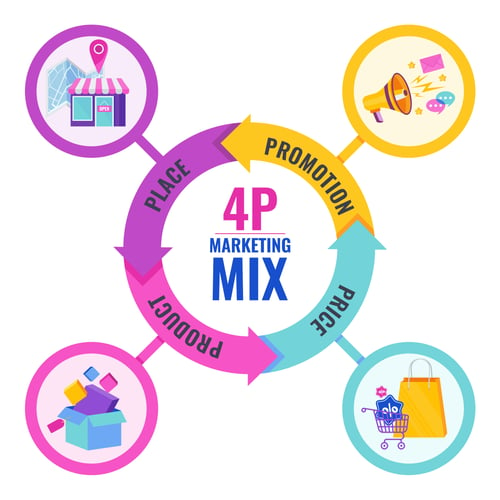Every solid marketing strategy is centered around the 4 Ps: product, price, place, and promotion. Each P plays a different role in the marketing mix, which describes the various marketing tools and strategies a business uses to achieve certain goals and objectives.
Let’s explore each P more in depth.
Product
A product refers to what a company is selling, whether it is a physical object or a type of service. Setting your product apart from other companies that offer similar products and services can be a difficult task; therefore, companies must have a strategy to prove why their products are the best. When trying to set yourself apart from other companies, ask yourself the following questions:
- What makes my product unique?
- What demographic would benefit from/enjoy my product?
- How does my product differ from competitors’ products?
- Why is my product important?
Price
Price refers to the amount a company charges for a product or service. Companies often struggle to find a price that allows them to be competitive while still making a profit. Because there are so many competitors with different price points, finding the right price for your product may require experimentation.
When setting a price, businesses should consider multiple factors. First, the business should consider what competitors are charging for similar products. Familiarizing yourself with industry pricing trends can help you with a base starting price. Next, the company should consider how frequently the product will be purchased. Is this product a one-time purchase? Is the product subscription-based? Finally, the company should think about how to drive a profit while also taking into consideration the cost to make and ship the product.
Place
Place, otherwise known as location, plays a role in whether or not potential customers have access to your product. Picking the best location to distribute your product can be difficult if you don’t know where your target audience is located. Therefore, researching your target audience beforehand and analyzing purchasing data before selecting a location for distribution is a must.
For example, if a company only sells its product in a local store but finds that a large portion of its target audience is located internationally, the company should consider expanding to selling the product online as well. Whether you choose to sell your product in a physical store, online, or a hybrid of the two, you always want to make sure that your target audience has access to your product.
Promotion
Promotion is the final piece of the marketing puzzle. Promotion is a strategic way of bringing awareness to your brand with the goal of converting people in your target audience into customers. Without promotion, businesses may miss out on potential customers.
While promotion can be very effective, businesses should always consider which channels would be most effective. When deciding which channels to use, ask yourself the following questions:
- Which channels is your target audience using?
- What are your promotional goals and objectives?
- How do your competitors promote their products?
- Do you have a budget for promotion?







